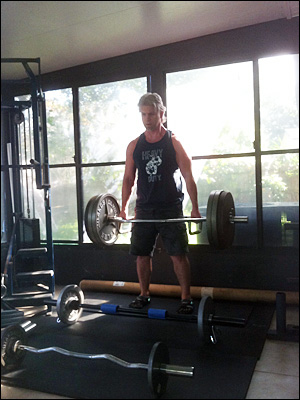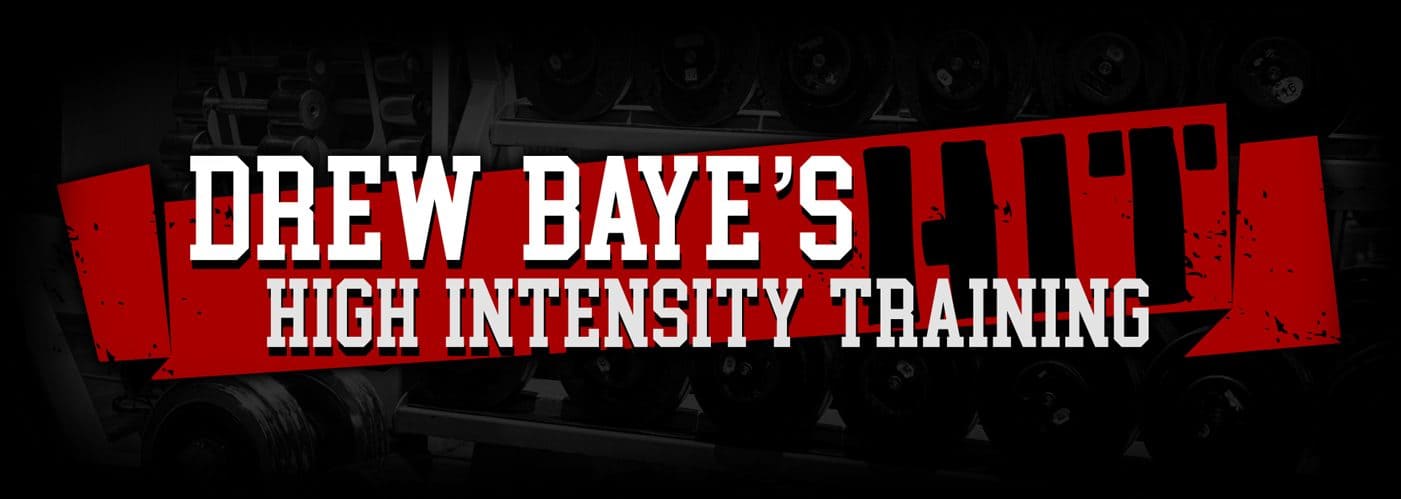Question: Due to busyness I’ve really cut down my volume of exercise. No “cardio” and my weight lifting workouts consist of a home workout of trap bar deadlifts which I feel in my quads, glutes, hamstrings, lower back, traps, forearms and abs. Supinated grip chin ups which I feel work my biceps, lats, forearms, and abs. Finally, either a flat dumbbell bench or push ups which hit my triceps, chest, and shoulders. It’s quite similar to Mike Mentzer’s consolidation routine.
My thoughts are that if I reach a certain level of competence on each lift most of my bodyparts will be as strong and muscular as I’m genetically able to be. Is there any reason to do more than that?
Answer: Yes, there are a few reasons to do more than that. While you can achieve significant increases in muscular strength and size with very brief consolidation routines, it is not effective to only do the same three exercises every time you work out. Achieving optimal overall muscular development requires more variety of movements.
Although compound movements like deadlifts, chin-ups, and chest presses do involve all the major muscle groups, not all of the muscles are involved or benefit to the same degree. To effectively work all the major muscle groups your routine should include multiple compound pushing, pulling, and lower body exercises in different planes or emphasizing different muscle groups. Compound pushing and pulling movements should be done in both vertical and horizontal planes, and compound lower body exercises should include both thigh dominant movements like squats and leg presses and hip dominant movements like deadlifts and trunk extensions.

Your routine should also include direct exercises for smaller muscle groups like the neck, calves, and forearms which are not as effectively targeted by the compound exercises. In addition to improving your ability to perform a variety of physical tasks and increasing your resistance to injury, well developed neck, forearm, and calf muscles are important for an aesthetically balanced physique.
Most people do not need to reduce their workout volume to only a few compound exercises, but if you choose to keep your workouts brief you can incorporate more varied exercises by alternating between different pushing, pulling, and lower body exercises each time you train. For example, you could perform squats, bench presses, and bent over rows in one workout, and deadlifts, standing presses, and chin-ups in another, ending with direct exercises for the abs and forearms or calves and neck. For example:
Consolidation Workout A
- Squat
- Bench Press
- Bent-Over Row
- Crunch
- Wrist Extension
- Wrist Flexion
Consolidation Workout B
- Deadlift
- Standing Press
- Chin-Up
- One-Legged Heel Raise
- Neck Flexion
- Neck Extension
There are many other exercises you could substitute, and you could even divide this up three or four ways if you want. For most people, however, a better starting point would be a workout incorporating all of these. For more examples and more detailed guidelines on exercise selection and workout design read High Intensity Workouts.

Comments on this entry are closed.
Hi Drew! Great article!what frequency do you suggest with this tipe of training? I am doing Athletes Routine for years and i am very Happy with it! Mike said once a week..and u? Is It possible to have your workout (a+b) once a week? Have a nice day! 🙂
Hey Robin,
After a short learning and break-in period during which workouts are less intense and can be done more frequently I reduce people’s workouts to twice a week and make adjustments from there based on individual response. Some people recover and adapt slower, some faster, and the optimal frequency can change for someone depending on nutrition, sleep, physical activity, and other factors, but two workouts a week appears to be the average and thus a good starting point for most people.
While some people do need a week or more to recover between workouts, and one workout a week can be effective for many people, most people do not need that much time to rest between workouts and would make better progress training more frequently.
My go to routine would be considered consolidated. Since I am retired military and live within 5 miles of two major Air Force installations with very well equipped gyms (free to use for retirees) I perform my “A” routine before hitting the commissary. I first help my wife through her once a week H.I.T big 3 or big 5. My “B” routine is home based about mid week unless my body tells me I need a full week of recovery.
A Routine: Chin-up, Dips or Push-up, BW row, TSC belt squat plus BW strict squats, Calf Raises, Wrist Curls every other workout. (One set to muscular failure as efficiently as possible). Isochronal method, gymboss set at 30 second intervals, my goal is to reach failure somewhere between the 60-90 second zone. Once I reach 90 seconds without reaching failure I know I need to find a way to make the exercise harder.
B Routine: TSC Deadlift, TSC Standing shoulder Press, TSC or TRX Bicep Curls, Tricep Pushups on pushup handles.
TSC Neck work once or twice a month. For this session my gym boss is set up for 20 second intervals. On deadlifts I extend the easier contraction level to 40 seconds.
I highly recommend your Timed Static Contraction ideas for older trainees. TSC and Project Kratos will give you everything needed to improve body composition and cardiovascular improvements.
Hey Ralph,
The isochronal progression method combined with fix rest intervals is definitely an ass-kicker. One of my favorites is the Cerberus workout (bodyweight 3×3) using isochronal progression with a 90 second target TUL and 10 second rest intervals.
I also use a brief workout when I train. This is my routine: Tuesday is Squats-2×8-12, Bench press-2×8-12,DB one-arm row-2×8-12,Standing Press-2×8-12 and Barbell curls-2×8-12. On Saturday I do Dead-lift-2×8-12,DB incline press-2×8-12,Pulldown-2×8-12 and Triceps overhead ext.-2×8-12. That’s it. Progression is 2lbs. a week.
Hey Mike,
This is a solid foundation, but don’t neglect your neck, abs, and calves. While these are involved to some degree during the other exercises it is more effective to work them directly, and doing so doesn’t add much volume or increase the duration of your workouts significantly. If you are able to recover doing two sets of each exercise you should consider cutting back to one set of each and performing all of these exercises in both of your workouts. The second set of each exercise doesn’t provide any additional benefit for strength and size gains, but hitting each exercise more frequently if your recovery ability allows it will.
I’m now doing bodyweight big 6:
Wall Sit
Squat
Push Up
Straight Bridge (Static hold to failure)
Pike Push Up
Row (floor)
It’s quite good for 8 minutes 1x/week, and very intense. It’s quite possible I leave arm, calf, abdominal or neck potential on the table but I didn’t see much progress when I did those isolation exercises. And honestly by exercise 3 I wish it was over;-)
Hey Ondrej,
I would add a chin-up or TSC pull-down to this, and while direct upper-arm exercises are redundant if you’re doing compound pushing and pulling movements you should still include some direct work for your neck, calves, and abs. You could alternate between working one of these groups at the end of each workout if you want to keep your workouts short.
Thanks Drew! I’ll try to incorporate a hip dominant and knee dominant lower body movement and vertical and horizontal pressing/pulling. Have you written any articles about forearm work before?
Hey Joel,
You’re welcome, and if you enter “forearms” in the search box you’ll find several articles which discuss it. I’ve got a short book on grip strength planned for after I finish my current writing projects if you want something much more detailed.